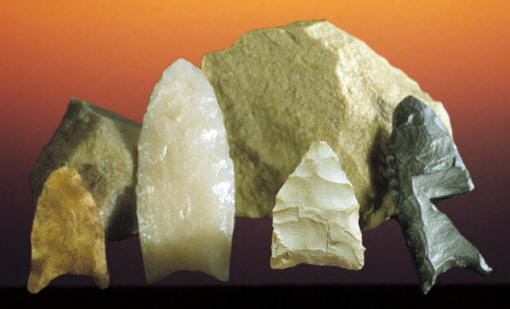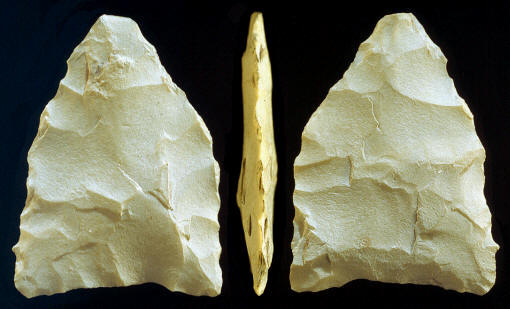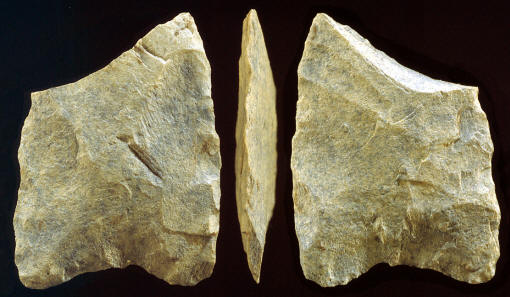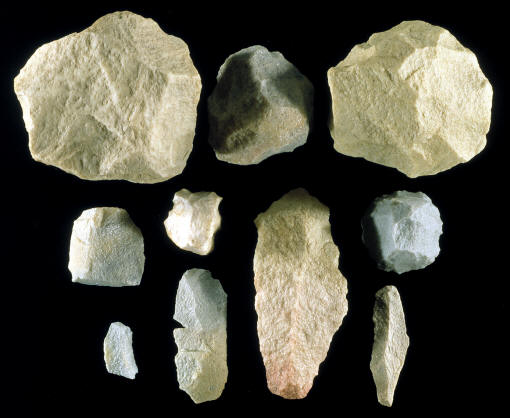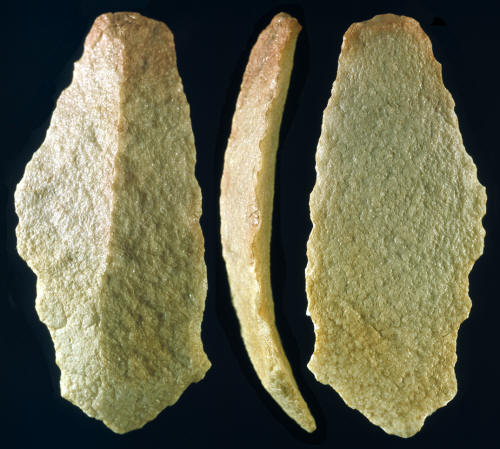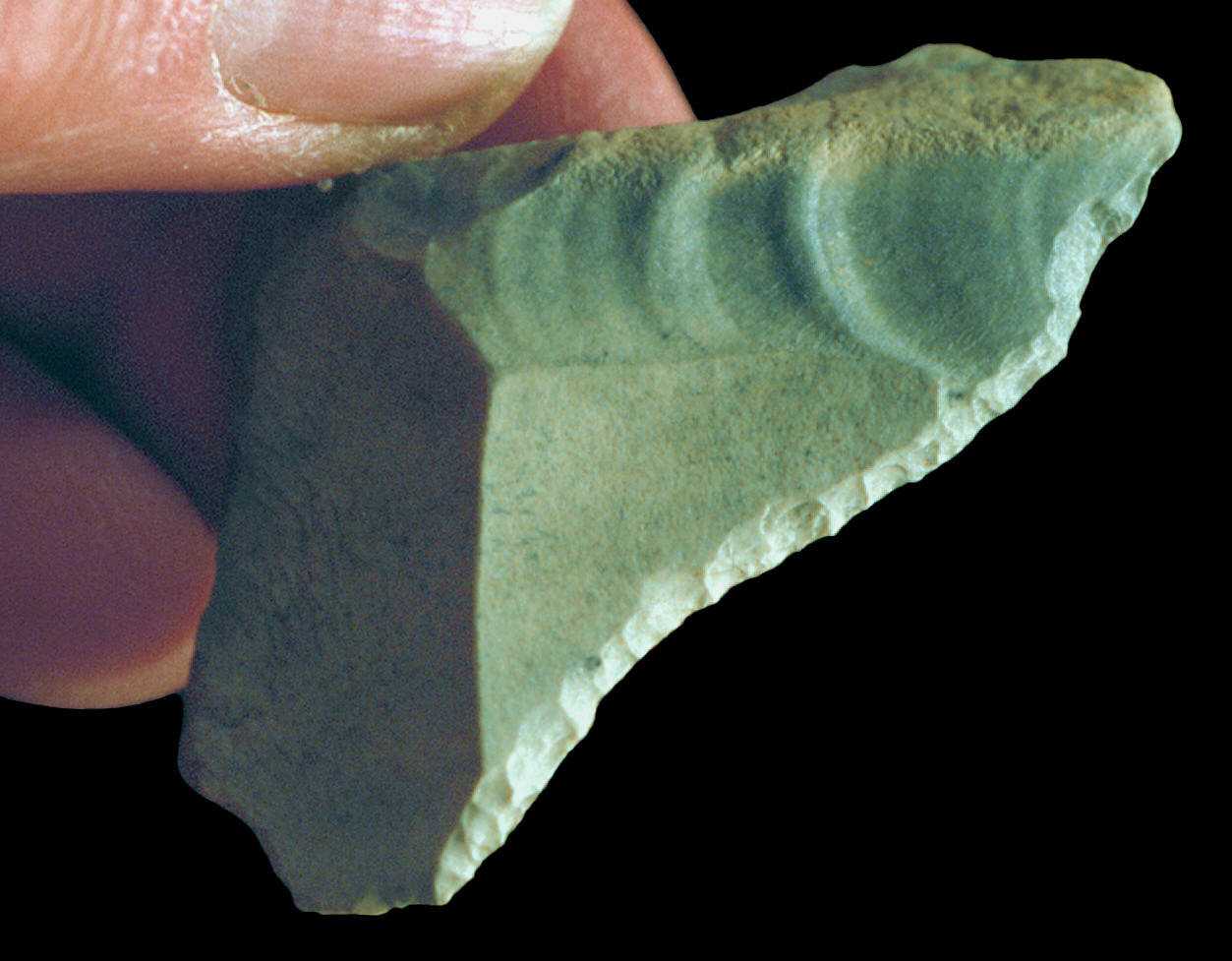|
|
|
McAvoy describes the two "early triangular" points as being very similar to unnotched Hardaway points. The two "early triangular" points were found near a Hardaway use area feature but the two find areas did not overlap. He writes that "The use areas of the two traditions do not overlap, but they may be separated by no more than 15 feet in one and possibly two cases." |
|
|
One of the best and most reliable identifiers of Stone Age cultures are the projectile points. Clovis points can even have regional variations within the same culture. It's interesting that the two pre-Clovis projectile points from Cactus Hill appear to be identical to some types of Late Archaic points and late stage preforms. This suggests that pre-Clovis projectile points began in form as unnotched Hardaway or Hardaway preforms then change through time into a fluted point technology then evolved back into the same type of projectile point again. McAvoy is aware of the problem and comments that "Not enough occurrences have been documented in an excavated context to clearly establish a relative age for these points and there are no radio carbon dates" but then goes on to say, "the type may date to 12,000 B P or older." |
|
|
The artifacts attributed to the pre-Clovis feature at Cactus Hill are represented by a core and blade lithic technology. The assemblage includes blade cores, core blades, utilized flakes, edge trimmed unifacial tools, and abraders. All of the artifacts from the pre-Clovis level, except for the two projectile points, are technologically the same as Clovis tools, and would pass for Clovis artifacts. McAvoy writes that "The use areas of the two traditions do not overlap, but they may be separated by no more than 15 feet in one and possibly two cases." |
|
|
|
|
The vertical distance between the Clovis and pre-Clovis levels are very slight. The distance ranges from 2 3/4 to 15 7/8 inches (7 to 15 cm) deep. The lower Paleo-Indian levels are reported to be undisturbed with no indication of bioturbation (mixing of sediments). This lower Paleo-Indian level is reported to have a stable geological lamellar banding in the sandy deposit. |
|
|
The discovery of a pre-Clovis culture, with rock solid evidence, would not surprise most archaeologists. The idea is logical. It's generally accepted that fluting is an American invention and the technology must have developed from a pre-Clovis people who were not fluting. One possible explanation for a paradigm shift towards a fluted point technology might have been the incentive to use a different flintknapping technique. This fundamental change might have developed from a desire to utilize large high quality cherts and chalcedony that became available in the New World for the production of very large biface cores. If, for instance, a knapper changed his technique from just using a billet and punch to a rocker punch technique (see Dothager), the difference in flake removal control might begin to produce a completely different type of projectile point. The indirect rocker punch technique allows the knapper to remove, with less effort, very large flakes across the face of very large bifaces and to remove the flakes from any side, end and corner angle. This edge-to-edge style of flaking does not appear as a tradition in post-Clovis cultures and it's a good bet that the technique probably won't appear in a very early pre-Clovis culture. |
|
|
|
|
Although there have been many archaeological sites discovered in recent years that seem to show a pre-Clovis level or horizon, few archaeologists completely accept them as absolute proof. Monte Verde is one exception. Although much hard work and very precise measurements and laboratory analysis has been done at Cactus Hill, it's not the absolute proof that scientists need to completely accept a pre-Clovis culture. The haunting problem with this site is the fact that it is located in sandy sediments and the artifacts were excavated in a fairly shallow microstratigraphy. Also, where there are dozens of pre-Clovis artifacts represented at Cactus Hill there will eventually need to be hundreds of artifacts before a pre-Clovis culture will be accepted. However, the Cactus Hill site may prove to be a solid contribution that will add to future yet undiscovered early Paleo-Indian sites. |
|
|
"REFERENCES"
1997, McAvoy, Joseph M. & McAvoy, Lynn D.,
"Archaeological Investigations Of Site 44SX202, Cactus Hill, Sussex
County Virginia." |
|
